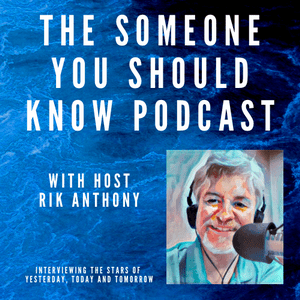In the world of sales, words can only take you so far. While the message you convey is important, how you present yourself—the way you move, the expressions you make, and even the posture you hold—can determine whether a prospect feels connected and engaged or distant and uninterested. Body language, often described as a silent form of communication, can dramatically influence the outcome of a sales conversation. In fact, research suggests that up to 55% of communication is nonverbal, with body language playing a leading role. For sales professionals, mastering body language can create deeper connections, build trust, and enhance the impact of every conversation.
The science behind body language is fascinating, particularly when viewed through the lens of neuroscience. The brain’s mirror neuron system helps explain why body language is so powerful. These neurons fire when we observe someone else’s body language, enabling us to mirror their emotions or actions. This means that when you project positivity and confidence, your prospect is likely to feel the same, fostering a sense of trust and openness. Conversely, negative body language can cause a defensive or distrustful reaction. In sales, where trust is paramount, being mindful of these nonverbal signals is essential.
Eye contact, for example, is one of the most critical elements in building a connection during a sales conversation. Appropriate eye contact demonstrates attentiveness, sincerity, and confidence. Neuroscience research has shown that eye contact activates parts of the brain responsible for social and emotional processing, helping to create a bond between two people. When a salesperson maintains steady, comfortable eye contact, the prospect is more likely to feel seen and understood, making them more open to engaging in the conversation.
However, there’s a balance to be struck. Too much eye contact can feel intrusive or intense, while too little might be interpreted as disinterest or evasiveness. Skilled sales professionals know how to find the sweet spot, using eye contact to engage their prospect while also giving them space to feel comfortable.
Posture is another key aspect of nonverbal communication that speaks volumes about confidence and authority. An open, upright posture sends a clear message of self-assurance and competence. Whether standing or sitting, presenting yourself with good posture signals that you are in control and ready to lead the conversation. On the other hand, slouching or closing your body off—such as crossing your arms—can suggest insecurity or defensiveness, which can, in turn, trigger the same feelings in your prospect. The brain interprets open body language as a sign of approachability and trustworthiness, while closed-off postures might activate the prospect’s own defensive mechanisms, making them less receptive to your message.
Gestures can also play an influential role in how your message is received. When used effectively, gestures can help emphasize key points, making your communication more dynamic and memorable. The brain processes gestures alongside words, enhancing understanding and retention. For instance, using hand movements to illustrate size or direction can make your message more vivid and easier for the prospect to visualize. However, it’s important to use gestures purposefully and avoid excessive movements, which can distract from the conversation and make you appear nervous or disorganized.
Facial expressions, often overlooked, are another crucial component of body language in sales. Neuroscience reveals that facial expressions are processed by the brain’s limbic system, which governs emotions. A well-timed smile can convey warmth and friendliness, while a concerned expression can show empathy when discussing a prospect’s challenges. These expressions allow you to connect emotionally with your prospect, creating a deeper rapport. It’s this emotional connection that often makes the difference between a transactional interaction and a lasting relationship.
Mirroring is a particularly subtle but effective body language technique. It involves subtly mimicking the body language, tone, and pace of the person you are speaking with. Neuroscience supports the effectiveness of this technique, showing that mirroring activates the brain’s mirror neuron system, fostering a sense of connection and similarity. When a prospect feels that their body language is being mirrored, they are more likely to feel understood and comfortable, which can make them more open to your message. This technique should be used with care, though—overly obvious mirroring can seem insincere or manipulative.
While it’s important to focus on the positive aspects of body language, being mindful of negative cues is equally crucial. Crossed arms, fidgeting, or avoiding eye contact can unintentionally communicate disinterest, nervousness, or even dishonesty. These nonverbal signals can activate the prospect’s amygdala—the brain’s center for processing fear and threat—which may cause them to become guarded or skeptical. By paying attention to these potential pitfalls, you can ensure that your body language supports rather than undermines your message.
It’s also important to recognize that body language is not a one-size-fits-all strategy. Cultural differences can play a significant role in how body language is interpreted. For example, in some cultures, direct eye contact is a sign of respect and engagement, while in others, it might be viewed as confrontational or inappropriate. Understanding these cultural nuances is key to building rapport with prospects from diverse backgrounds.
Ultimately, body language is a vital tool in the sales professional’s toolkit. When used effectively, it can enhance your message, build trust, and create stronger connections with your prospects. By understanding the neuroscience behind body language and paying attention to your nonverbal cues, you can ensure that your sales conversations are as impactful as possible.
Looking to learn more about Braintrust? Visit braintrustgrowth.com.
The post The Influence of Body Language in Sales Conversations appeared first on Braintrust Growth.
I come from a large Italian family. I’m number seven in the line of ten kids!
When my dad passed away some years ago, I was fortunate enough to be there as the end was coming. I was standing just to the right of his hospital bed; he was lying there with his eyes closed. All of a sudden, Dad opens his eyes. He looks up at the ceiling with a look of peace – and maybe accomplishment – on his face. Then he closes his eyes for the last time. I guess out of instinct, I reached down and kissed him on that prickly cheek one last time. My dad left a legacy in that life well lived! A legacy based on three main principles: Family, Service, and Dedication. I do what I do to carry on that legacy to the best of my ability.
















































BabyBoomer.org is an online membership community created by and for the Baby Boomer Generation. Boomers, and those who service and support them, are welcome to join our community accessing all general topics.
Notifications
